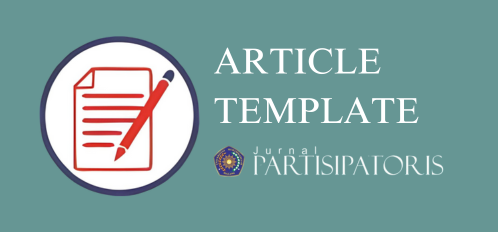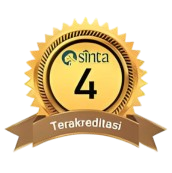The STRATEGI PENANGGULANGAN STUNTING MELALUI SEKOLAH SIAGA KEPENDUDUKAN
DOI:
https://doi.org/10.22219/jp.v4i2.27913Abstract
The study focuses on describing the implementation of a population alert school as a stunting prevention strategy in Malang Regency. The research method employed is descriptive qualitative, with six informants participating in the study. Data collection involved interviews, observation, and documentation, while data analysis encompassed data collection, data reduction, data presentation, and drawing conclusions. The findings of the study are as follows: Population Alert Schools have been implemented in Malang Regency since 2019. The Population Alert School curriculum has been integrated into the existing school curriculum. Several schools have organized activities known as SSK (abbreviated from Population Alert School in Indonesian). The primary objective of implementing population alert schools is to prevent an increase in stunting rates in Malang District. However, the implementation of population alert schools faces obstacles, with one notable challenge being the lack of universal adoption by all schools in Malang District. Based on the study's results, several suggestions are proposed: Optimize SSK activities further to enhance their effectiveness in addressing stunting. Transform SSK activities into regional policies to ensure mandatory implementation in all schools, considering the ongoing prevalence of stunting in Malang Regency. Foster collaboration between the government and the community to reduce stunting more effectively, thereby achieving the desired goal. These recommendations aim to improve the implementation of population alert schools and enhance efforts to combat stunting in Malang Regency.
Downloads
References
Apolonia,K., Suhartono., Subagio H,W., Budiyono., Emman, I,M.(2016). Ke-jadian stunting dan kematangan usia tulang pada anak usia sekolah dasar di daerah pertanian Kabupaten Brebes. J Kesehat Masy. 11(2):96– 103.doi:http://dx.doi.org/10.15294/ kemas.v11i1.3462
Dunn, W N. (1990). Analisa Kebijaksanaan Publik, Yogyakarta: PT. Hanindita.
Emmy, LS., dkk.(2007). Mengapa Mereka diperdagangkan, Jakarta: Yayasan Jurnal Perempuan.
Higgins, G E.(2010). Cybercrime: An Introduction to an Emerging Phenomenon, New York: McGrawHill.
Husken, F., dkk .(1997). Pembangunan dan Kesejahteraan Sosial Indonesia di Bawah Orde Baru, Jakarta: PT. Grasindo.
Johnson, L C. & Charles L. S, .(1923). Social Welfare: A Response to Human Need, Massachusetts: Allyn and Bacon
Kraft, M E. & Scott R. F.(2007). Public Policy: Politics, Analysis and Alternatives, Washington: CQ Press
Nugroho, R, .(2012). Social Policy for the Developing Countries, Yogyakarta: Pustaka Pelajar.
Rein, M.(1970). Social Policy: Issues of Choice and Change, New York: Random House.
Sagala, R. V & Ellin, R.(2007). Memberantas Trafiking Perempuan dan Anak, Bandung: Institut Perempuan.
Silalahi, O.(1989). Beberapa Aspek Kebijaksanaan Negara, Yogyakarta: Liberty.
Sugiyono,.(2015). Metode Penelitian Pen-didikan Pendekatan Kuantitatif, Kualitatif, dan R&D. Bandung: Alfabeta.
Suharto, Edi, .(2007). Kebijakan Sosial sebagai Kebijakan Publik, Bandung: Alfabeta.
Suharto, Edi, .(2005). Analisis Kebijakan Publik: Panduan Praktis Mengkaji Masalah dan Kebijakan Sosial, Bandung: Alfabeta.
Suharto, Edi .(2005). Membangun Masyarakat Memberdayakan Rakyat: Kajian Strategis Pembangunan Kesejahteraan Sosial dan Pekerjaan Sosial, Bandung: PT. Refika Aditama.
Suharto, Edi .(2007). Pekerjaan Sosial di Dunia Industri: Memperkuat Tanggungjawab Sosial Perusahaan, Bandung: PT. Refika Aditama.
Downloads
Published
How to Cite
Issue
Section
License

This work is licensed under a Creative Commons Attribution-ShareAlike 4.0 International License.
Authors who publish with Jurnal Partisipatoris agree to the following terms:
- For all articles published in the Jurnal partisipatoris, copyright is retained by the authors. Authors give permission to the publisher to announce the work with conditions. When the manuscript is accepted for publication, the authors agree to the automatic transfer of non-exclusive publishing rights to the publisher.
- Authors retain copyright and grant the journal right of first publication with the work simultaneously licensed under a Creative Commons Attribution-ShareAlike 4.0 International License that allows others to share the work with an acknowledgment of the work's authorship and initial publication in this journal.
- Authors are able to enter into separate, additional contractual arrangements for the non-exclusive distribution of the journal's published version of the work (e.g., post it to an institutional repository or publish it in a book), with an acknowledgment of its initial publication in this journal.
- Authors are permitted and encouraged to post their work online (e.g., in institutional repositories or on their website) prior to and during the submission process, as it can lead to productive exchanges, as well as earlier and greater citation of published work (See The Effect of Open Access).











